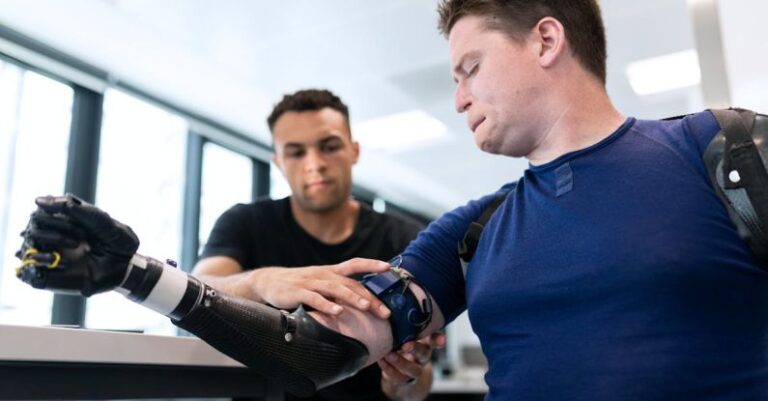
Haptic feedback, the sense of touch provided to a user through a device, plays a crucial role in enhancing the interaction between humans and robots. In the realm of robotics, haptic feedback serves as a vital component that enables robots to perceive and respond to their environment with greater precision and efficiency. This article delves into the significance of haptic feedback in robotics and explores how this technology is shaping the future of human-robot interaction.
**Enhancing Sensory Perception**
Haptic feedback serves as a bridge between humans and robots, allowing for a more intuitive and immersive interaction experience. By simulating the sense of touch, haptic feedback enables robots to perceive and interpret physical sensations, such as texture, pressure, and temperature. This capability enhances the robot’s sensory perception, enabling it to navigate and manipulate objects in its environment with a greater degree of accuracy and dexterity.
**Improving Safety and Efficiency**
One of the key benefits of haptic feedback in robotics is its ability to enhance safety and efficiency in various applications. For instance, in industrial settings, robots equipped with haptic feedback technology can detect and respond to changes in the environment, such as obstacles or irregularities in surfaces. This real-time feedback allows robots to adjust their movements accordingly, reducing the risk of collisions and improving overall operational efficiency.
**Enabling Teleoperation and Remote Control**
Haptic feedback also plays a critical role in enabling teleoperation and remote control of robots in various fields, including healthcare, construction, and exploration. By providing users with tactile feedback from a remote location, haptic-enabled robots can be controlled with a greater level of precision and accuracy. This capability is particularly valuable in scenarios where human intervention is required in hazardous or hard-to-reach environments.
**Facilitating Learning and Training**
In addition to enhancing operational capabilities, haptic feedback in robotics also facilitates learning and training processes. By simulating realistic tactile sensations, haptic-enabled robots can provide trainees with a hands-on learning experience, allowing them to practice and refine their skills in a safe and controlled environment. This immersive training approach not only accelerates the learning curve but also improves retention and mastery of complex tasks.
**Promoting Human-Robot Collaboration**
The integration of haptic feedback technology in robotics is paving the way for closer human-robot collaboration in various domains. By enabling robots to communicate with humans through tactile cues, haptic feedback fosters a sense of trust and cooperation between humans and machines. This collaborative relationship is particularly valuable in collaborative manufacturing settings, where robots and humans work together seamlessly to achieve common goals.
**Driving Innovation and Advancements**
As haptic feedback continues to evolve and become more sophisticated, it is driving innovation and advancements in the field of robotics. Researchers and engineers are continually exploring new ways to leverage haptic technology to enhance the capabilities of robots and improve their performance in diverse applications. From soft robotics to wearable devices, haptic feedback is reshaping the landscape of robotics and opening up new possibilities for human-robot interaction.
**In Summary**
Haptic feedback plays a pivotal role in enhancing the capabilities of robots and fostering a closer relationship between humans and machines. From improving sensory perception and operational efficiency to enabling teleoperation and facilitating training, haptic feedback is transforming the way we interact with robots across various industries. As this technology continues to advance, we can expect to see even greater integration of haptic feedback in robotics, leading to more sophisticated and intuitive human-robot interactions in the future.





